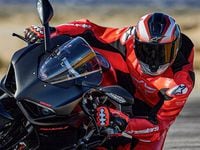During the economic crisis that crippled the motorcycle market, we speculated about new types of bikes that would capture the interest of the younger generations. In 2011, we cheered for the Honda NC700, a pleasant and very practical bike that opened the door to new riders. And in 2015, we have another good reason to cheer: the Benelli BN302.
At 3,890 euros, the BN302 is priced affordably, and it represents an excellent value for the money. In Italy, a Vespa Sprint 125 3V is priced at 3,980. The extreme competitiveness of the BN302 comes from the fact that Benelli is part of QianJiang, the huge Chinese motorcycle group. Top management at QJ requested that the BN302 be focused on the needs of the booming Far East and Pacific markets, where price, as well as excellent durability, are very important.
The Pesaro, Italy, based technical team led by Chief Project Engineer Stefano Michelotti has come up with all the right answers. The 300cc engine of the BN302 is a parallel twin derived from the BN600’s four-cylinder powerplant. It has the 65.0mm by 45.2 mm bore and stroke measurements, and the same 12:1 compression ratio. Similarly, the valve size is unchanged, with 25mm intakes and 22mm exhausts, respectively set at 14.8 degrees and 14 degrees to the axis of the cylinder, for an included angle of 28.8 degrees. This means the combustion chamber of the BN302 is a little less compact in profile than is generally seen today.
New is the Morse-driven DOHC valve operation, which features a very moderate 9 degrees of overlap and 7.5mm of valve lift for all. The Benelli engine breathes through 37mm throttle bodies that are 1mm smaller than those used by the BN600. The 302 engine uses the same Delphi integrated injection-ignition management system first adopted on the 600 four and features an oxygen sensor per cylinder. The new Benelli twin delivers a claimed 38 hp at 10,000 rpm, plus 20.2 pound-feet of peak torque at 9,000RPM. For a meaningful comparison, the Kawasaki Ninja 300 is claimed to produce 39 hp at 11,000 rpm and the 20.6 pound-feet of torque at 10,000 rpm.
At the bottom end, the Benelli 302 follows a tried and true layout featuring a classic 360-degree crankshaft turning on three 32mm main bearings. The rod bearings are 30mm in diameter, for a very sturdy structure, while the main journals and crank journals overlap a generous 8.4mm. A 360-degree parallel twin needs two balance shafts to counter the primary order imbalance that generates the nasty vibrations for which the traditional British twins of yore were known. The Benelli technicians, however, adopted only one balancing shaft—one to counter the vertically vectored vibrations, while letting the massively counterweighted crankshaft cancel the horizontally vectored ones.
The 91.7mm center-to-center rods produce a 2.02:1 ratio to the stroke, which keeps the secondary imbalance a bay and lessens piston side load and friction. The result is an almost perfectly smooth, vibration free bike with little mechanical fuss.
The engine is harnessed in a rather massive frame, and it’s fair to say the BN302 is a big bike for its displacement. The wheelbase spans 55.5 inches—longer than that of many 600cc sportbikes. It is not light either, at a claimed 408 pounds dry.
Here, the needs of the Asian markets come into play again. There, a motorcycle is a utility vehicle that must withstand bad road surfaces while scooting around loaded with people and heavy bags. The trellis frame looks structurally lean and state of the art in its design, but it uses extremely thick gauge mild-steel tubing. And it’s a low carbon grade of mild steel, for it retains all its plasticity after welding, and its thick gauge helps it withstand heavy loads. For the swingarm, an over-under style was adopted.
While conservative in its structural construction, the frame is state of the art in its steering geometry, sporting 24.5 degrees of rake and a moderate 91.7mm of trail. Static weight distribution is a correct 51/49. Front suspension is by an inverted 41mm fork while the rear is handled by a cantilevered shock absorber. Wheel travel is 5.3 in. front and rear. The BN302 rolls on cast aluminum wheels shod with 120/70-17 and 140/70-17 tubeless radials front and rear, respectively. The braking system uses twin 260mm rotors with four-piston calipers in front, plus a 240mm rear rotor with a floating caliper.
Overall, the Benelli BN302 looks svelte and elegant, thanks to a well shaped tank and seat and nicely coordinated accessory components such as the radiator cowl and under-engine spoiler. The engine itself is compact and clean, with attractive side covers and a totally unobstructive exhaust system tucked neatly under the engine.
RIDING THE BN302
I had to recheck the dimensional numbers of the BN302 because in real life the bike feels very light and compact, like a 300cc should. The rational ergonomics help, but the main positive factor is the excellent weight distribution with the rider aboard, which is an advantage of the long wheelbase. Seat height is a fairly friendly 31.3 in, which makes the BN302 accessible for female motorcyclists and shorter men. Also, the engine is surprisingly smooth and superbly civilized, with a huge silencer that produces an exhaust note like that of a four-cylinder.
The clutch requires light pressure and is very precise in its action. Equally impeccable is the six-speed gearbox, which shifts smoothly and with good precision. But the engine is the biggest surprise. Its Delphi management ensures strong and stumble-free response from below 3000 rpm, and it perfectly supports the engine all the way up past 11,000 rpm. Even with its heft, this Benelli is capable of very strong performance for its displacement. And the throttle response is smooth, with good pull from just about any revs in any gear.
The engine’s personality, along with its exhaust note, changes dramatically at 7,500 rpm. From there past 11,000 rpm, speed builds quickly while progressing up through the gears. In the San Marino Republic, on a twisty back road, I made full use of the BN302’s higher rev range. The bike is capable of speeds a whisker above 100 mph, but its acceleration and pick-up performance were above any expectations. The frame is well balanced in weight distribution, and the steering geometry makes the BN302 agile and quick into line yet absolutely surefooted. This was proven while coming down from San Marino on a horribly bumpy back road. The front suspension absorbed those bumps, keeping the BN302 composed and comfortable. The rear shock, however, was too harsh in its response. Brakes were solid and reliable, and the BN302 returned 66 mpg in my test.
In sum, this little Benelli BN302 exceeded my expectations, and its sturdy construction will ensure outstanding durability. Fitted with bags and a medium windscreen, the BN302 makes a surprisingly capable touring bike. But please replace the present shock with one from Sachs.












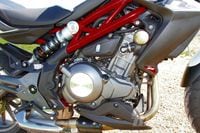
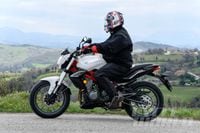
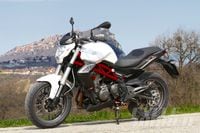
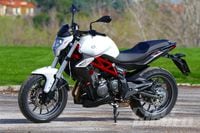

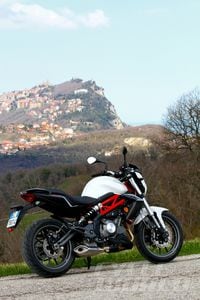
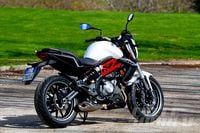
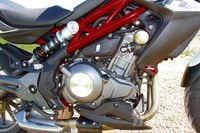
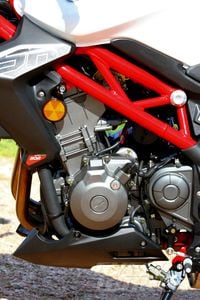
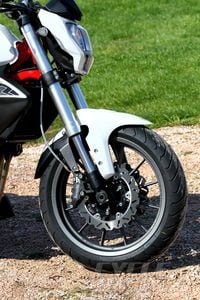


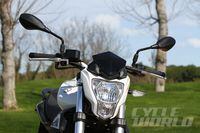


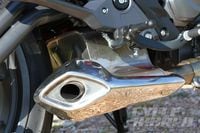
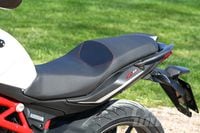
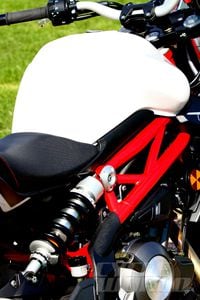
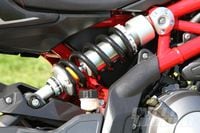
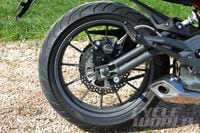
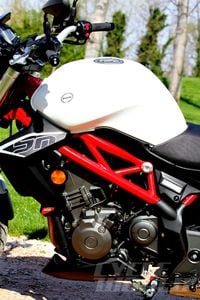
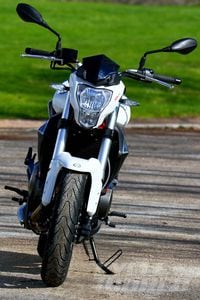
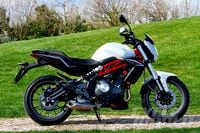


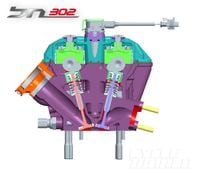
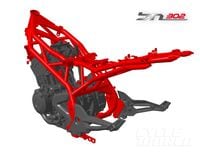
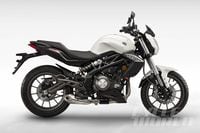
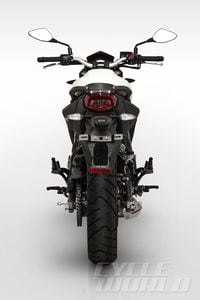
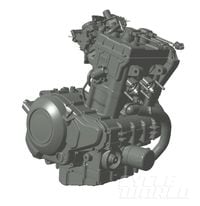
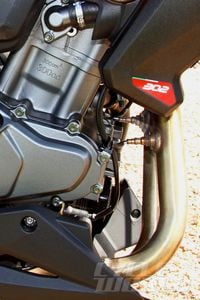
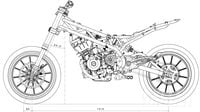

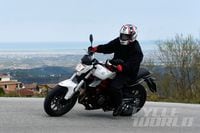
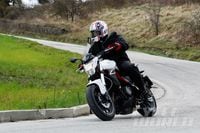
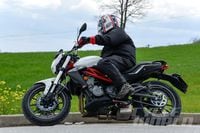
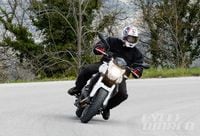
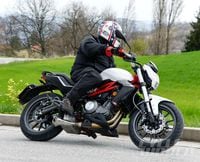
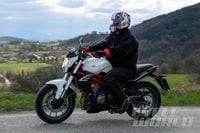
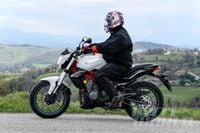

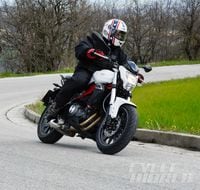

/cloudfront-us-east-1.images.arcpublishing.com/octane/CZ5OM3E43ZEXJHY7LCYXCHLIKI.jpg)
/cloudfront-us-east-1.images.arcpublishing.com/octane/DF5T4K5KPZFJXFCTGPYR77PKJM.jpg)
/cloudfront-us-east-1.images.arcpublishing.com/octane/RMCT2KVQBJHBZMRTSLOVPMOILU.jpg)

/cloudfront-us-east-1.images.arcpublishing.com/octane/K45KB2XHQVA65DX7VN4ZSMT2BI.jpg)
/cloudfront-us-east-1.images.arcpublishing.com/octane/FNHXQQ56BRD7TO4YIJ453PNG2M.jpg)
/cloudfront-us-east-1.images.arcpublishing.com/octane/OIKJC4JA3ZH7BMKUGWYKBIY5FA.jpg)
/cloudfront-us-east-1.images.arcpublishing.com/octane/MT2SAEWY6FDXFBYSLDE3AEFDTM.jpg)
/cloudfront-us-east-1.images.arcpublishing.com/octane/66UPKPYVURBPRCP5HXSN56MEMM.jpg)
/cloudfront-us-east-1.images.arcpublishing.com/octane/EOREGDSRKFDCRJC6K3EDVHBGCE.jpg)
/cloudfront-us-east-1.images.arcpublishing.com/octane/42RF63Q3LVCMBP3DGTWXFYSMOA.jpg)
/cloudfront-us-east-1.images.arcpublishing.com/octane/XNVY3EVWZFCEVPUGJGAN633LXE.jpg)
/cloudfront-us-east-1.images.arcpublishing.com/octane/2PLTVHXY7FDSPFHKU5CFOC43ZY.jpg)
/cloudfront-us-east-1.images.arcpublishing.com/octane/B6M3WTRLFZGNXBEATNXPVGBBD4.jpg)
/cloudfront-us-east-1.images.arcpublishing.com/octane/4CMH3FI73BEM5D6MFYX42FLDSQ.jpg)
/cloudfront-us-east-1.images.arcpublishing.com/octane/RIHAPYNWU5H3XAOXNOPRWCBTQA.jpg)
/cloudfront-us-east-1.images.arcpublishing.com/octane/HU4NUBCL3VAFZA75VYRCMAUHVM.jpg)
/cloudfront-us-east-1.images.arcpublishing.com/octane/OB43AZK7TRA6XLZL5WRDVW2TDA.jpg)
/cloudfront-us-east-1.images.arcpublishing.com/octane/5G44Y3FXWNFSTEQKCA355PXOPU.jpg)

/cloudfront-us-east-1.images.arcpublishing.com/octane/XRI4GTLCVBA5NESASCBIR5LYQI.jpg)
/cloudfront-us-east-1.images.arcpublishing.com/octane/EF7566PXARGMBAOMLWTECYL3LE.jpg)

